Welcome to our exploration of coffee decaffeination methods! Have you ever wondered how your favorite caffeinated beverage is transformed into a chemical-free decaf version? In this article, we will take you on a journey through the fascinating world of coffee decaffeination, uncovering the history, methods, and key facts behind this popular process.
Decaf coffee has gained popularity among individuals who desire the taste of coffee without the effects of caffeine. Whether you opt for decaf due to caffeine sensitivity, insomnia concerns, or during pregnancy, you can still enjoy the rich flavors and health benefits of coffee through the decaffeination process.
Key Takeaways:
- Decaffeinated coffee accounts for approximately 12 percent of global coffee consumption.
- Decaf coffee is a suitable choice for those with caffeine sensitivity, insomnia, or during pregnancy.
- The history of decaf coffee dates back to the 19th century, and its commercial production began in the early 20th century.
- Various decaffeination methods include the solvent method, the Swiss Water process, and CO2 processing.
- Decaf coffee retains a small amount of caffeine, typically less than 10mg per 6oz cup.
Who Created Decaf Coffee and When?
Decaf coffee, a popular beverage enjoyed by many, has an intriguing history that dates back to the 19th century. The discovery of decaf coffee can be attributed to Friedlieb Ferdinand Runge, a German scientist, who isolated caffeine from coffee in 1820 at the request of the renowned poet Johann Wolfgang von Goethe. This marked the first step in understanding how to remove caffeine from coffee beans. However, it was not until Ludwig Roselius, a German coffee merchant, developed the commercial decaffeination process in 1906 that decaf coffee production began in earnest.
Roselius’s journey into decaffeination started unexpectedly when a shipment of green coffee beans was exposed to seawater during transit but still yielded drinkable coffee. Intrigued by this accidental discovery, Roselius further experimented with different techniques to remove caffeine from coffee beans. He eventually patented his decaffeination process, laying the foundation for the mass production of decaf coffee.
The contributions of Friedlieb Ferdinand Runge and Ludwig Roselius revolutionized the coffee industry, giving birth to a beverage that allows coffee lovers to enjoy the rich taste and aroma of coffee without the stimulating effects of caffeine.
Let’s take a closer look at the various methods used to decaffeinate coffee beans in the next section.
Table: A Brief Timeline of Decaf Coffee History
| Year | Event |
|---|---|
| 1820 | Friedlieb Ferdinand Runge isolates caffeine from coffee |
| 1906 | Ludwig Roselius develops the commercial decaffeination process |
| Present | Decaf coffee continues to be enjoyed worldwide |
While decaf coffee has a relatively short history compared to regular coffee, the innovation and dedication of individuals like Friedlieb Ferdinand Runge and Ludwig Roselius have made it possible for coffee lovers to savor the taste of coffee without the buzz of caffeine.
How is Decaf Coffee Made?
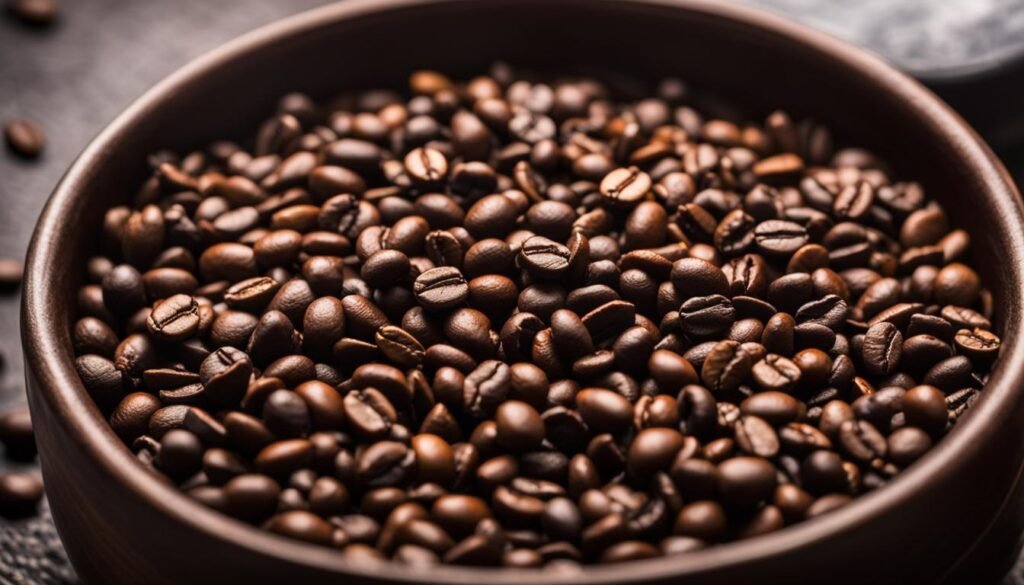
Decaffeination is the process of removing caffeine from coffee beans to create decaf coffee. There are several methods used in the decaffeination process, each involving different solvents or techniques to extract the caffeine. Let’s explore some of the most common methods:
Solvent Method
The solvent method is one of the traditional decaffeination techniques. It can be divided into direct solvent and indirect solvent processes. In the direct solvent process, the coffee beans are soaked directly in a solvent, such as methylene chloride or ethyl acetate, to remove the caffeine. The indirect solvent process involves soaking the beans in water first, then treating the water with a solvent to extract the caffeine. Ethyl acetate, derived from decomposing fruits or produced synthetically, is often used as a solvent in the decaffeination process. It gives decaf coffee a slightly sweeter taste.
CO2 Extraction
CO2 extraction, also known as supercritical carbon dioxide extraction, is a method that uses liquid carbon dioxide to dissolve and remove caffeine from the coffee beans. The beans are placed in an extraction vessel and exposed to high-pressure CO2, which acts as a solvent. The caffeine-rich CO2 is then turned back into a gas, leaving behind decaffeinated coffee beans. This method is known for its effectiveness in extracting caffeine while preserving the flavor compounds in the coffee.
Swiss Water Process
The Swiss Water process is a natural and chemical-free method of decaffeination. It involves soaking the green coffee beans in a solution called Green Coffee Extract (GCE) that extracts caffeine through osmosis. The caffeine-rich GCE is filtered and reused, and the process is repeated until the coffee beans are 99.9% caffeine-free. This method is known for retaining the unique characteristics and flavors of the coffee.
These methods are just a few examples of how decaf coffee is made. Each method has its own advantages and may result in slightly different flavor profiles. The choice of decaffeination method can vary depending on factors such as taste preferences, environmental concerns, and desired caffeine content. Ultimately, the goal of decaffeination is to provide coffee lovers with a delicious cup of coffee without the stimulating effects of caffeine.
How Much Caffeine Is in Decaffeinated Coffee?
When it comes to decaf coffee, one of the most common questions is how much caffeine it actually contains. While decaf coffee is designed to have a significantly lower caffeine content than regular coffee, it is not completely caffeine-free. The industry standard for decaffeinated coffee is to have less than 10mg of caffeine per 6oz cup, which is significantly lower than the 80-100mg found in a regular cup of coffee. On average, an 8 ounce cup of decaf coffee contains about 2-15mg of caffeine.
This lower caffeine content in decaf coffee makes it a suitable choice for individuals who are sensitive to caffeine or need to limit their caffeine intake for various reasons. For example, pregnant women are often advised to limit their caffeine consumption, and decaf coffee provides an option for them to still enjoy the taste of coffee without worrying about the effects of caffeine. It’s important to note, however, that the caffeine content in decaf coffee can vary depending on the brand and the specific decaffeination process used.
The Caffeine Limit During Pregnancy
During pregnancy, healthcare professionals usually recommend limiting caffeine intake to 200mg per day. This recommendation is based on the potential effects of caffeine on fetal development and the increased risk of miscarriage associated with high caffeine consumption. Drinking decaf coffee can be a great alternative for pregnant women who still want to enjoy a cup of coffee while staying within the recommended caffeine limit.
It’s worth mentioning that decaf coffee still retains some level of caffeine, albeit in smaller amounts. The decaffeination process removes between 97-99.9% of caffeine from the coffee beans, resulting in the low caffeine content found in decaf coffee. While this small amount of caffeine may not have the same stimulating effects as regular coffee, it’s always a good idea for pregnant women and individuals with specific health concerns to consult with their healthcare provider regarding caffeine consumption.
| Type of Coffee | Caffeine Content (per 8 oz cup) |
|---|---|
| Regular Coffee | 80-100mg |
| Decaf Coffee | 2-15mg |
The Different Methods to Decaf Coffee
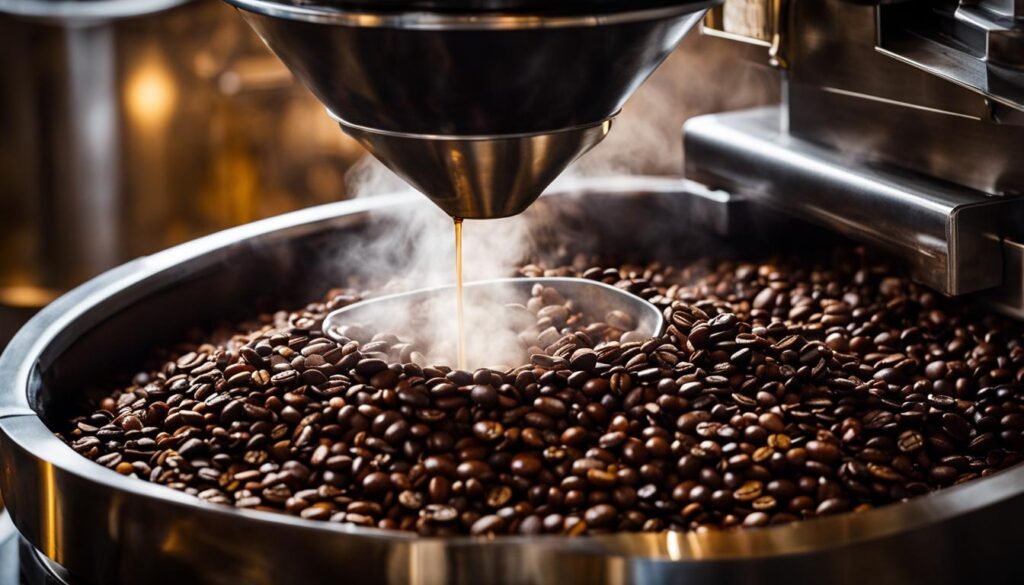
When it comes to decaffeinating coffee, there are several methods in use today. Each method aims to remove caffeine while preserving the flavor and characteristics of the coffee beans. Let’s take a closer look at three common decaffeination methods: the solvent method, the Swiss Water process, and CO2 processing.
The Solvent Method
The solvent method is a popular decaffeination technique. It involves soaking the coffee beans in a solvent to extract caffeine. There are two main types of solvent methods: the direct solvent process and the indirect solvent process. In the direct solvent process, the beans are soaked directly in a solvent like methylene chloride. In the indirect solvent process, the beans are first soaked in water, and then the water is treated with a solvent.
The Swiss Water Process
The Swiss Water process is a chemical-free method of decaffeination. It relies on water, temperature, and time to extract caffeine from the coffee beans. The beans are soaked in a solution called Green Coffee Extract (GCE), which removes caffeine through osmosis. The caffeine-rich GCE is then filtered, and the process is repeated until the beans are nearly caffeine-free. The Swiss Water process is known for its ability to preserve the unique flavors and characteristics of the coffee.
CO2 Processing
CO2 processing is another method used to decaffeinate coffee beans. It involves using liquid carbon dioxide to dissolve and remove caffeine from the beans. The beans are placed in an extraction vessel and exposed to high-pressure CO2, which extracts the caffeine. The caffeine-rich CO2 is then turned back into a gas, leaving behind decaffeinated coffee beans. CO2 processing is known for its effectiveness in removing caffeine while preserving the flavor compounds in the coffee.
| Decaffeination Method | Description |
|---|---|
| The Solvent Method | Involves soaking the beans in a solvent to extract caffeine |
| The Swiss Water Process | A chemical-free method using water, temperature, and time to remove caffeine |
| CO2 Processing | Uses liquid carbon dioxide to dissolve and remove caffeine from the beans |
These three methods offer different approaches to decaffeination, allowing coffee lovers to enjoy their favorite beverage without the effects of caffeine. Each method has its own advantages and produces decaf coffee with distinct flavors and characteristics. Whether you prefer the solvent method, the Swiss Water process, or CO2 processing, there are plenty of options to explore in the world of decaf coffee.
What Really Is Decaf Coffee?
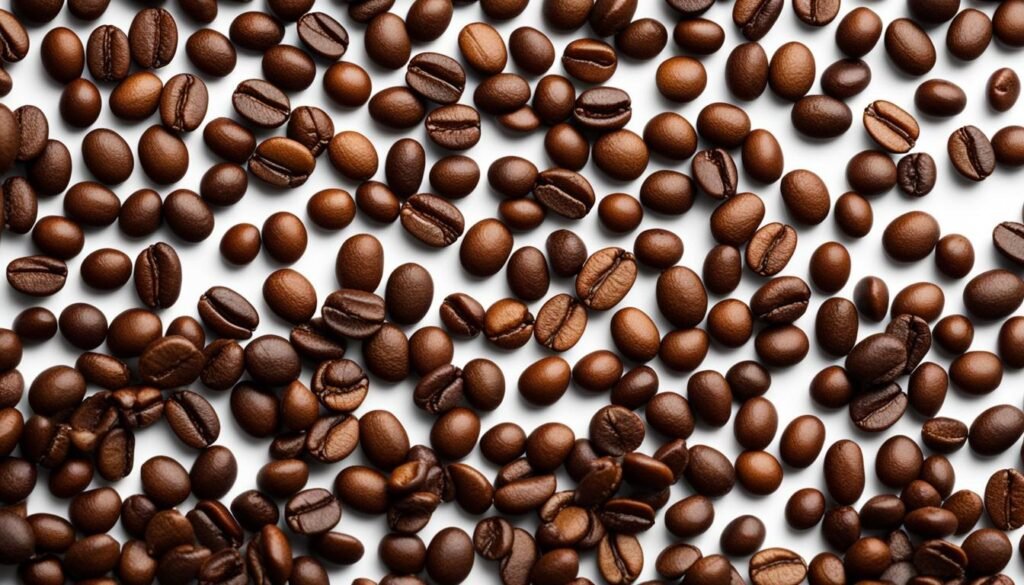
Decaf coffee is a popular choice for those who want to enjoy the taste of coffee without the effects of caffeine. But what exactly is decaf coffee? Contrary to popular belief, decaf coffee is not completely caffeine-free. It is regular coffee with a lower caffeine content, as it retains a small amount of caffeine even after the decaffeination process. Different decaffeination methods remove between 97-99.9% of caffeine from the beans, resulting in a caffeine content of about 2-15 mg per 8 ounce cup.
Decaf coffee still carries the same rich flavors and aroma as regular coffee, making it a suitable alternative for those who want to moderate their caffeine consumption. Although it may not provide the same energy boost, decaf coffee can still be enjoyed for its taste and other potential health benefits. It’s important to note that decaf coffee is not the same as caffeine-free coffee, as the latter contains absolutely no caffeine.
If you’re wondering why decaf coffee is not completely caffeine-free, it’s because the decaffeination process is not 100% efficient in removing all caffeine from the beans. However, the level of caffeine in decaf coffee is significantly lower compared to regular coffee, making it a great option for individuals who are sensitive to caffeine or need to limit their caffeine intake due to various health reasons.
Decaf Coffee: Caffeine Content
| Decaf Coffee | Caffeine Content (per 8 oz cup) |
|---|---|
| Industry Standard | Less than 10 mg |
| Average Range | 2-15 mg |
| Regular Coffee | 80-100 mg |
How Decaf Coffee Was Discovered
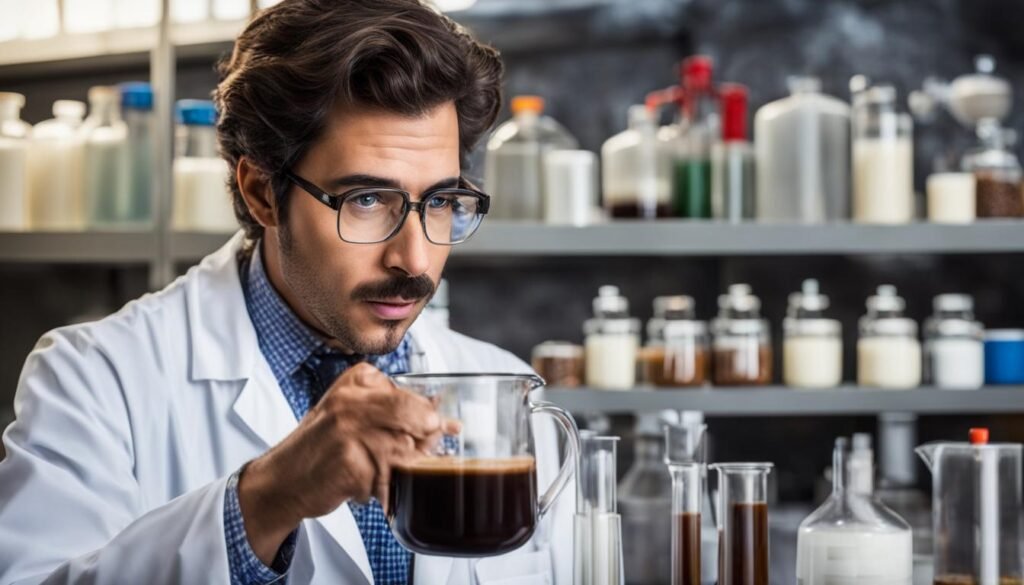
Decaf coffee, a caffeine-free alternative to regular coffee, was discovered in the early 20th century by Ludwig Roselius. It all started when a coffee shipment fell into the sea and lost its caffeine, but surprisingly, it retained its flavor. Intrigued by this unexpected outcome, Roselius began experimenting with different methods to decaffeinate coffee beans.
Roselius eventually developed the Roselius process in 1903. This process involved steaming the coffee beans with acids and using a solvent to remove the caffeine. While the Roselius process is no longer used today, it was the first significant step towards the development of decaffeination methods.
Since then, decaffeinated coffee has become increasingly popular, offering coffee lovers the opportunity to enjoy the taste of coffee without the stimulating effects of caffeine. Today, various decaffeination methods, such as the solvent method, the Swiss Water process, and CO2 processing, are used to create decaf coffee that retains its flavor and aroma.
Decaf coffee has come a long way since its accidental discovery by Ludwig Roselius. With advancements in decaffeination technology, coffee enthusiasts can now savor a cup of decaf coffee that provides the same great taste as regular coffee, minus the caffeine.
The Decaf Coffee Process
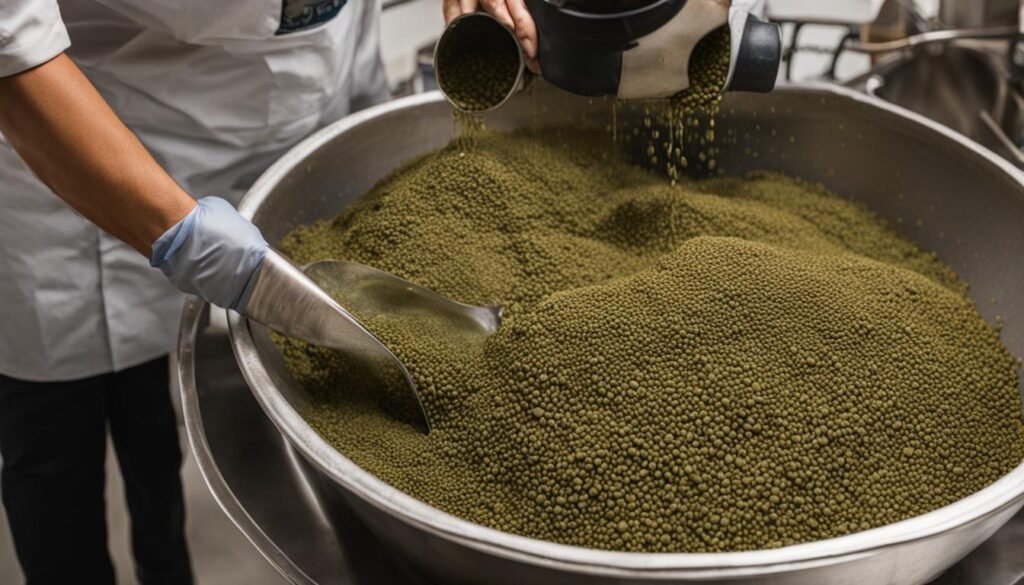
In the world of coffee, decaffeination is a crucial step in creating that perfect cup of decaf. The process of decaffeinating coffee beans happens prior to roasting, while the beans are still in their green state. This ensures that the final product retains the flavor and characteristics of the coffee, while eliminating the caffeine content. Preserving the flavor is of utmost importance, as caffeine contributes to the bitterness and acidity of coffee.
There are several decaffeination methods used in the industry, including the solvent method, the Swiss Water process, and CO2 processing. Each method focuses on removing caffeine while minimizing the impact on flavor. By employing these techniques, coffee producers are able to offer a wide range of decaf options that cater to different tastes.
The Solvent Method
One common decaffeination method is the solvent method, which involves using solvents, such as methylene chloride or ethyl acetate, to extract caffeine from the green coffee beans. The beans are soaked in a solvent, allowing the caffeine to dissolve. The solvent is then removed, taking the caffeine with it. The beans are then rinsed and dried, ready for roasting.
While the solvent method is effective in removing caffeine, there has been some concern about the potential residue of solvents in the final product. However, rigorous testing and regulations ensure that decaf coffee produced using the solvent method meets safety standards and is safe for consumption.
The Swiss Water Process
Another popular method of decaffeination is the Swiss Water process. This method is known for being chemical-free and organic. It involves soaking the green coffee beans in water, which extracts the caffeine through osmosis. The resulting caffeine-rich water, known as Green Coffee Extract (GCE), is then passed through a carbon filter that traps the caffeine. The filtered GCE is reused to extract more caffeine from a new batch of beans. This process is repeated until the beans are 99.9% caffeine-free.
The Swiss Water process is highly regarded for preserving the unique flavors and characteristics of the coffee, while effectively removing caffeine. It provides coffee lovers with a decaf option that maintains the integrity of the original coffee beans.
| Decaffeination Method | Preservation of Flavor |
|---|---|
| Solvent Method | Effective, but potential residue of solvents |
| Swiss Water Process | Preserves unique flavors and characteristics |
| CO2 Processing | Preserves flavor compounds |
CO2 Processing
The third method used for decaffeination is CO2 processing. This method utilizes liquid carbon dioxide to extract caffeine from the green coffee beans. The beans are placed in an extraction vessel and exposed to high-pressure CO2, which causes the caffeine to dissolve. The caffeine-rich CO2 is then converted back into a gas, leaving behind decaffeinated coffee beans. CO2 processing is known for its effectiveness in preserving the flavor compounds of the coffee, ensuring a rich and aromatic cup of decaf.
With these different decaffeination methods, coffee producers are able to offer a variety of decaf options to suit different preferences. Whether you’re a fan of the solvent method, prefer the organic Swiss Water process, or enjoy the results of CO2 processing, there’s a decaf coffee out there that’s perfect for you.
The Solvent Method
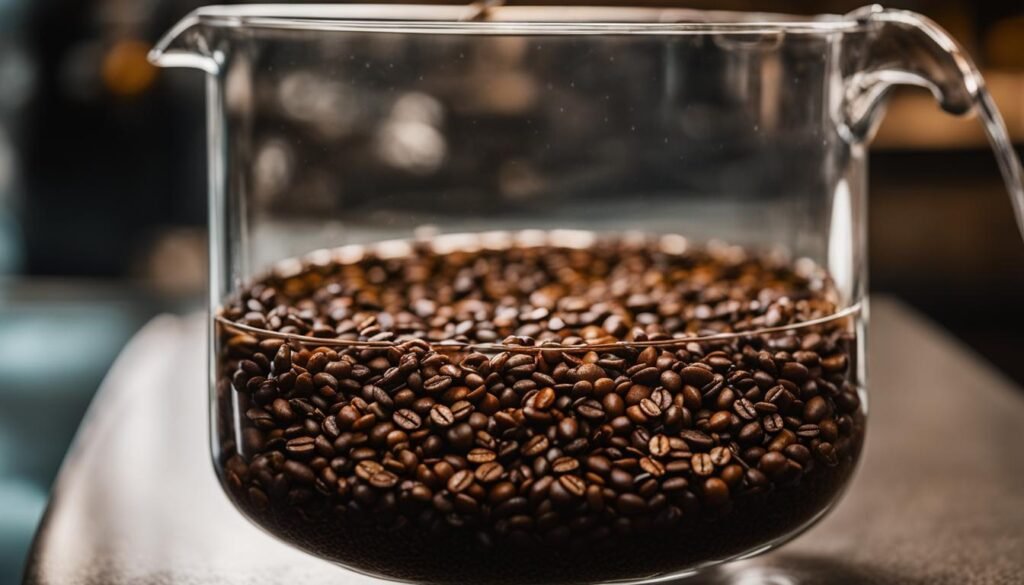
The solvent method is one of the common decaffeination techniques used to remove caffeine from coffee beans. It involves two processes: the direct solvent process and the indirect solvent process. In the direct solvent process, the beans are soaked directly in a solvent such as methylene chloride.
In the indirect solvent process, the beans are first soaked in water, and then the water is treated with a solvent to remove caffeine. Ethyl acetate is another solvent commonly used in the decaffeination process. It can be derived from decomposing fruits or produced synthetically. Ethyl acetate gives decaf coffee a slightly sweeter taste, which appeals to many coffee lovers.
The Solvent Method Process
The solvent method involves several steps:
- The coffee beans are steamed to open their pores, making it easier for the solvent to penetrate.
- The beans are then soaked in a solvent, either directly or indirectly, to extract the caffeine.
- After the caffeine has been removed, the beans are rinsed to remove any residual solvent.
- Finally, the decaffeinated beans are dried and roasted, ready to be ground and brewed into a delicious cup of decaf coffee.
Advantages of the Solvent Method
The solvent method is a popular decaffeination process for several reasons:
- It is an effective method that can remove a high percentage of caffeine from coffee beans.
- The process does not significantly alter the flavor and aroma of the coffee.
- It allows for a wide range of coffee bean varieties to be decaffeinated.
- It is a cost-effective method of decaffeination.
Overall, the solvent method is a widely used and trusted technique for producing decaf coffee that retains the flavors and qualities of regular coffee while reducing the caffeine content.
The Swiss Water Process
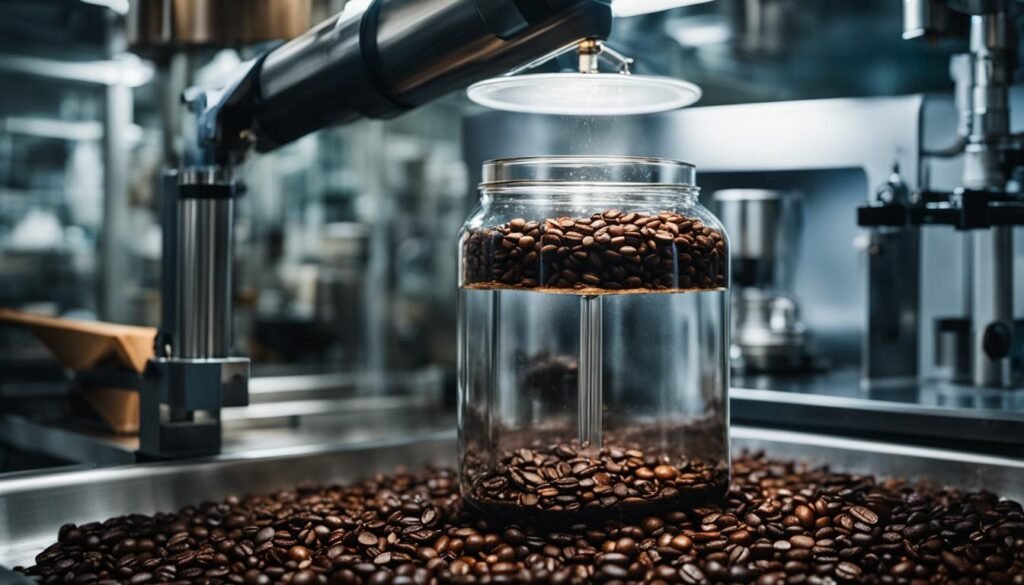
The Swiss Water process is a highly regarded method of decaffeination that offers a chemical-free alternative for producing decaf coffee. It utilizes water, temperature, and time to extract caffeine from green coffee beans, resulting in a caffeine content of less than 0.1%. This process is widely recognized for its ability to preserve the unique characteristics and flavors of coffee, making it a popular choice among coffee enthusiasts who want to enjoy a delicious cup of decaf without compromising on taste.
In the Swiss Water process, green coffee beans are soaked in a solution called Green Coffee Extract (GCE), which is created by dissolving the soluble components of coffee in hot water. As the beans are immersed in the GCE, osmosis occurs, causing the caffeine to move from the beans into the solution. The caffeine-rich GCE is then passed through activated carbon filters that selectively remove the caffeine while leaving behind the flavor compounds of coffee. The filtered GCE is recycled and reused for subsequent batches, ensuring that only the caffeine is removed.
The Swiss Water process is known for its meticulous attention to detail, with rigorous testing at various stages to guarantee that the beans meet strict quality standards. This method is certified organic and does not involve the use of any chemicals, making it an appealing choice for those seeking a natural and sustainable option for decaffeinated coffee. The result is a flavorful cup of coffee that offers all the benefits of decaf without any chemical residue.
Advantages of the Swiss Water Process
- Chemical-free: The Swiss Water process uses only water, temperature, and time to remove caffeine, ensuring a chemical-free decaf coffee.
- Preserves flavor: The careful extraction process of the Swiss Water method retains the unique flavors and characteristics of the coffee, resulting in a rich and satisfying cup.
- Organic certification: The process is certified organic, providing peace of mind to those who prioritize sustainability and environmentally friendly products.
- Low caffeine content: With a caffeine content of less than 0.1%, the Swiss Water process produces coffee that is suitable for individuals with caffeine sensitivity or those who need to limit their caffeine intake.
In conclusion, the Swiss Water process offers an excellent option for those looking to enjoy chemical-free decaf coffee without compromising on taste. Its meticulous extraction method preserves the flavors of coffee while ensuring a minimal caffeine content. With its organic certification and commitment to sustainability, the Swiss Water process is a popular choice among coffee lovers who value quality and environmental consciousness.
CO2 Processing
When it comes to decaffeination, CO2 processing is a popular method that utilizes liquid carbon dioxide to extract caffeine from green coffee beans. The process begins by placing the beans in an extraction vessel and exposing them to high-pressure CO2. This causes the CO2 to dissolve the caffeine, effectively removing it from the beans. Afterward, the caffeine-rich CO2 is converted back into a gas, leaving behind decaffeinated coffee beans.
CO2 processing is known for its effectiveness in removing caffeine while preserving the flavor compounds that contribute to the unique taste of coffee. The method ensures that the decaf coffee retains its aromatic and complex flavors, providing a satisfying experience for coffee lovers.
Conclusion
Decaf coffee offers a fantastic option for coffee lovers who want to savor the taste without the jolt of caffeine. Over time, various decaffeination methods have been developed, giving us a range of decaf coffee options to choose from. Whether you prefer the solvent method, the Swiss Water process, or CO2 processing, there is a decaf coffee out there to suit your taste.
However, one crucial factor that should never be overlooked is the importance of using high-quality beans. The quality of the beans used directly impacts the flavor and overall experience of the decaf coffee. Opting for premium beans ensures that you get the best possible cup, rich in flavor and aroma, even without the caffeine.
So, explore the world of decaf coffee options and find the one that tickles your taste buds. Whether you enjoy the bold flavors of a Swiss Water decaf or the smooth sweetness of ethyl acetate, there’s a decaf coffee waiting to be discovered. Remember, quality beans make all the difference in your caffeine-free coffee journey – so choose wisely and savor every sip!
FAQ
How is coffee decaffeinated?
Coffee is decaffeinated through various methods such as the solvent method, the Swiss Water process, and CO2 processing. These methods remove caffeine while retaining the flavor components of coffee.
Who created decaf coffee and when?
Decaf coffee was first discovered in 1820 by Friedlieb Ferdinand Runge, who isolated caffeine from coffee at the request of poet Johann Wolfgang von Goethe. The commercial decaffeination process was later developed by Ludwig Roselius in 1906.
How is decaf coffee made?
Decaf coffee is made through processes such as the solvent method, the Swiss Water process, and CO2 processing. These processes involve soaking the green coffee beans in solvents or water to remove caffeine, then rinsing and drying the beans.
How much caffeine is in decaffeinated coffee?
Decaffeinated coffee typically contains about 2-15 mg of caffeine per 8 ounce cup, compared to 80-100 mg in a regular cup of coffee. It is suitable for those with caffeine sensitivity or for pregnant women who need to limit their caffeine intake.
What are the different methods to decaf coffee?
The different methods to decaf coffee include the solvent method, the Swiss Water process, and CO2 processing. These methods use solvents, water, or carbon dioxide to extract caffeine from the beans.
What really is decaf coffee?
Decaf coffee is regular coffee with a lower caffeine content. It is not completely caffeine-free, as it retains a small amount of caffeine. Different decaffeination processes remove between 97-99.9% of caffeine from the beans.
How was decaf coffee discovered?
Decaf coffee was discovered by Ludwig Roselius in the early 20th century. After a coffee shipment fell into the sea and lost its caffeine but retained its flavor, Roselius developed the Roselius process in 1903 to decaffeinate coffee beans.
What is the decaf coffee process?
The decaf coffee process takes place before the beans are roasted, while they are still green. Preserving flavor is crucial, so various decaffeination methods are used to remove caffeine while retaining the other flavor components of coffee.
What is the solvent method?
The solvent method is one of the common decaffeination techniques. It involves soaking the beans in a solvent, either directly or indirectly, to remove caffeine. Solvents like methylene chloride or ethyl acetate are used in this process.
What is the Swiss Water process?
The Swiss Water process is an organic and chemical-free method of decaffeination. It uses water, temperature, and time to extract caffeine from green coffee beans. The beans are soaked in a solution called Green Coffee Extract (GCE) to remove caffeine.
What is CO2 processing?
CO2 processing is a method of decaffeination that uses liquid carbon dioxide to dissolve and remove caffeine from green coffee beans. The beans are exposed to high-pressure CO2, which extracts the caffeine, and then the CO2 is turned back into a gas.
What are the options for decaf coffee?
There are plenty of options for decaf coffee, whether you prefer the flavors of a Swiss Water decaf or the sweetness of ethyl acetate. It is important to choose high-quality beans to ensure a great cup of caffeine-free coffee.
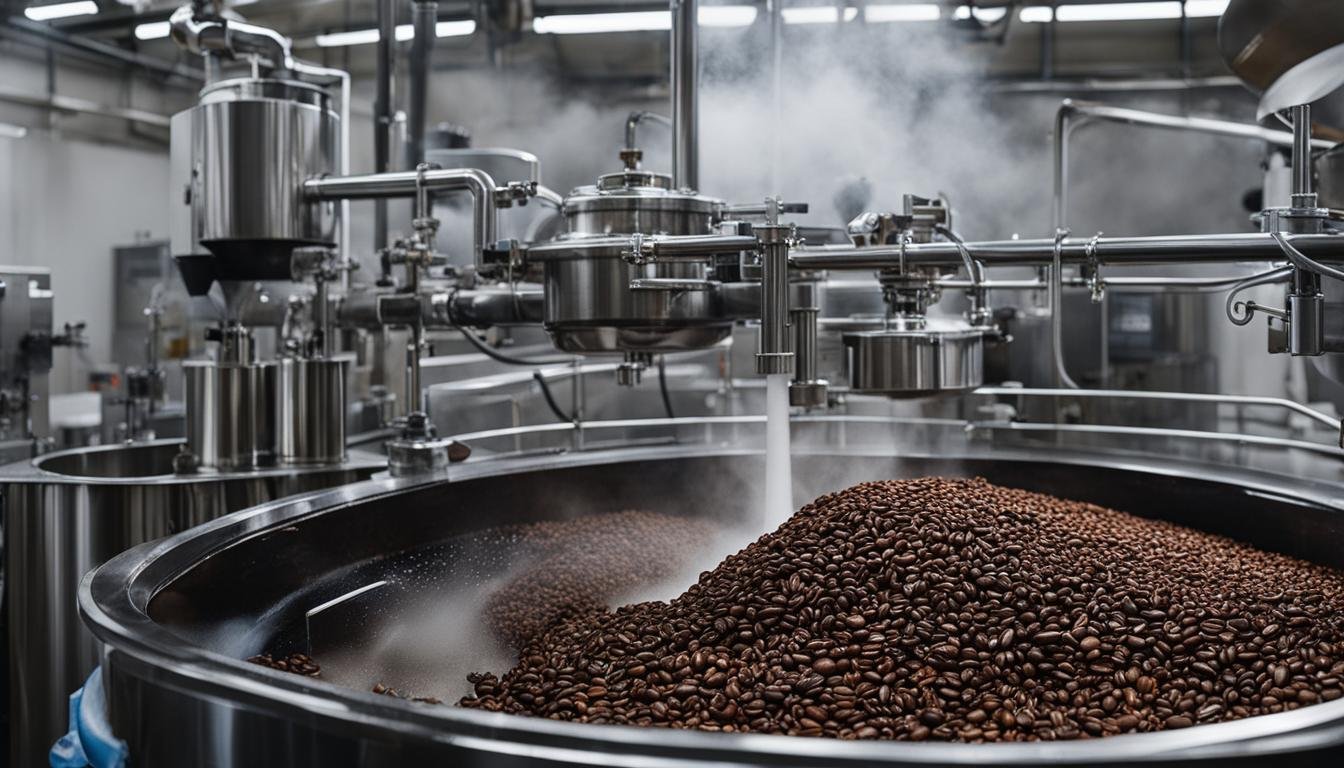
Leave a Reply